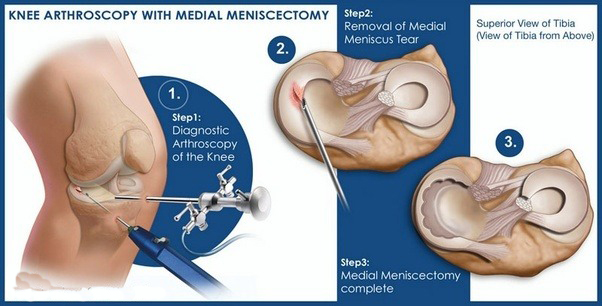Diagnostic Arthroscopy
Arthroscopy is a surgical method in which an arthroscope is utilized for conclusion and treatment of orthopedic conditions.
Arthroscopic method is utilized to assess and analyze a joint issue, and perform surgery to repair the joint. An arthroscope empowers the specialists to see the harmed joint and encompassing delicate tissues. Amid arthroscopy, the arthroscope is infused into the joint through a little cut around the site of damage. It has a light source and an appended camcorder which empowers your specialist to see bigger pictures on a video screen.
Arthroscopy offers a few advantages including littler entry points, insignificant agony, quicker recuperating and less scarring. The system should be possible on an outpatient premise without an overnight remain in the doctor's facility.

Some of the most frequent conditions found during arthroscopic examinations of joints are:
- Inflammation of the synovial membrane (membrane lining the joints of the knee).
- Acute or chronic injury: Injuries to the joints of the knee such as cartilage tears and tendon tears.
- Osteoarthritis: A type of arthritis caused by cartilage loss in a joint.
- Removal of loose bodies of bone or cartilage that becomes logged within the joint.
During an arthroscopic surgery, you will be administered general, spinal or local anaesthesia. A small buttonhole sized incision is made through which the arthroscope is inserted. Other specially designed instruments will be inserted through other small incisions. After the procedure the arthroscope is removed and incisions are closed. You may be instructed regarding incision care, activities to be avoided and exercises to be performed for faster recovery.
Some of the possible complications after arthroscopy include infection, phlebitis (clotting of blood in vein), excessive swelling, bleeding, blood vessel or nerve damage and instrument breakage.
Recovery
It may take several weeks for the punctured wounds to heal and the joint to recover completely. A rehabilitation program may be advised for a speedy recovery of normal joint function. You can resume normal activities within few days.
